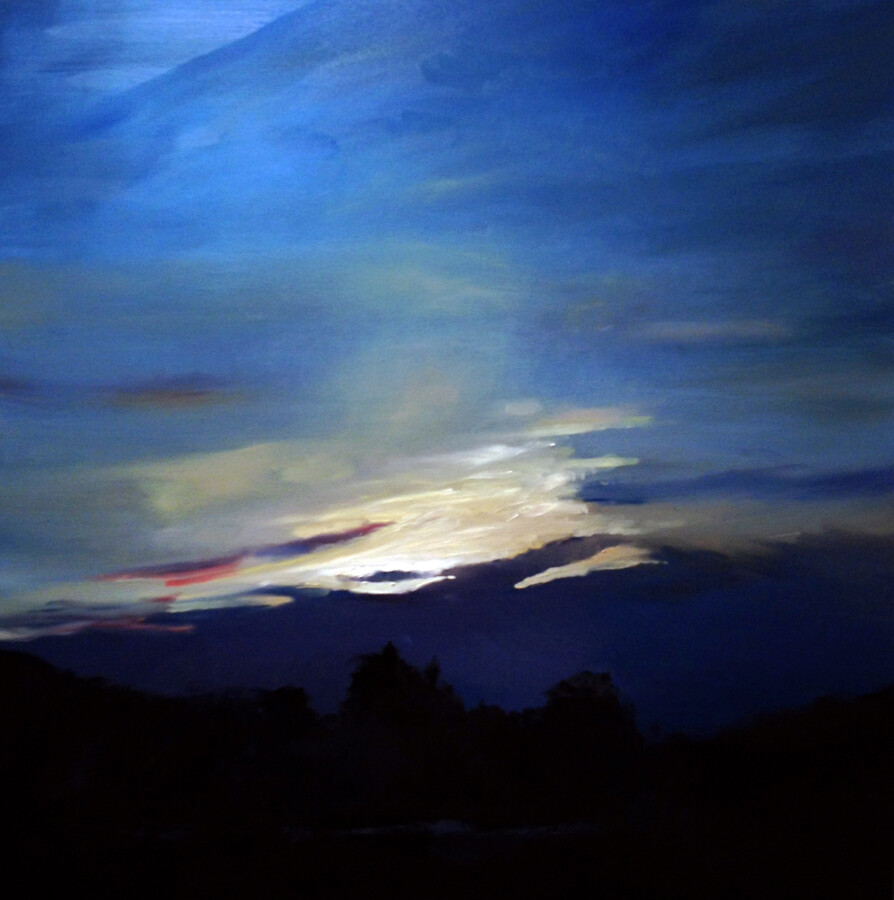As the universe is composed of solar systems within galaxies, so do we exist as a swarm of molecules, corpuscles, and atoms. The essential building blocks of the stars are the same as those of human beings. We exist within a universe we did not create that was formed by dynamic events we are still trying to comprehend, within a planet that is the only one (as far as we know) among hundreds of billions with the right amount of hydrogen and helium to sustain life. Either by chance or coincidence, we are here. We are bound to this planet. And despite our technological advances, the reason we are here is as mysterious now as it has been for every previous generation.
This mystery, and all of those other mysteries of existence—the paradoxical dualities of darkness and light, chaos and stillness, peace and violence, despair and contentment, belonging and exile, the seen and the unseen—are the forgotten brush strokes of painters. The mysteries of our existence have become lost in the hubbub of daily living, and I believe that art, and landscape painting in particular, has the power to transcend the busy activity of daily life and invite us into a very real but unseen realm. It allows us the opportunity to pause, to reflect, and to contemplate the world differently. Sitting in front of a work of art offers an opportunity where time and space can seem to stand still in a moment of becoming.
Of this nature, I see landscape painting as the outward expression of an internalized consciousness of humans in nature. Inherent in all landscape paintings is a figural presence, a participant or observer that is either directly or indirectly depicted. This figural presence is what ultimately brings completion to the landscape image—imbuing a painting with memory and meaning, connecting the realms of visible and invisible—thereby allowing us as viewers to become a part of the picture. Next to the artist who created the image, we are implied in landscape work as an additional figural presence, participating in the environment envisaged by the artist. Without viewers actively engaging the aesthetics or objects of the art piece, the work would not exist as a complete idea.
When we stand before an art object, we also bring our selves to it. We bring our attitudes concerning religion and our prejudices; we bring our pasts and those daily concerns that tend to trump the bigger mysteries of existence. Thus, we can often see an object but not see it at the same time. To me, landscape paintings act as a mirror that reflects our position in nature and nature’s position in relation to us and all of our internalized responses. Artists act as mediators between realms of the visible and the invisible; they communicate through visible information that which is certain but remains unseen.
In the same way that viewers bring themselves to the work, my activity as an artist is also influenced by my own perspective, including my theology and philosophy. My views are deeply connected to my artistic practice, yet while I see my pictures as objects, I do not regard them as religious objects. By means outside my understanding, what I see, read, and believe find a way into my work—intentionally or unintentionally. The subject of the works and the objects within the works are artistic choices, yet they are simultaneously unconscious creative accidents. My brush is loaded equally with thought and paint; the outcome is, in many respects, one of compromise between my mood, direction, and intentions and the mood, direction, and intentions of the painting. I begin with my own ideas of what to paint and the painting then poses challenges that I must reconcile as I aim to etch my ideas upon its surface.
In the paintings included in this exhibit, I have attempted to depict humans in relation to nature and cosmological questions of existence. I believe in a symbiotic union between the earthly and heavenly realms, and it is this universal connectedness that makes what I do in my daily life and art works important and profound. I find these relationships are shaped by light, as light gives form to the formless, yet it can also destroy form. Light is a measurement, a distance, and a constant. It is the means by which history can be interpreted and the vehicle by which time travels. As well, light is connected with every religion’s teaching about God. In the Divine Liturgy of St. John Chrysostom, the Father (the first person of the Trinity) is depicted as the “Father of Lights.” Orthodox Christians contemplate God as the uncreated light, the light that has always been. In my work, light is the aesthetic quality that brings form to the darkness of the landscape. It is the symbolic figural presence that is necessary to connect viewers to the work and to help us glimpse to the relationship between heaven and earth. It is the possibility of becoming in every single moment.
